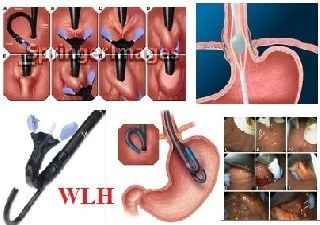Gastroesophageal reflux disease (GERD) is a common condition that occurs when stomach acid flows back into the esophagus, causing symptoms such as heartburn, chest pain, and difficulty swallowing. While medication and lifestyle changes can often help manage GERD symptoms, some patients may require more advanced treatment options, such as surgery. One such option is the Plicator endoscopic treatment, which uses a minimally invasive approach to address GERD symptoms.
The Plicator endoscopic treatment involves the use of a specialized device called the Plicator, which is designed to create small folds in the lower esophageal sphincter (LES), a muscular ring that separates the esophagus from the stomach. By creating these folds, the Plicator tightens the LES, reducing the likelihood of acid reflux and associated symptoms.
The procedure itself is typically performed under sedation and takes less than an hour to complete. During the procedure, the Plicator device is passed through the mouth and down the esophagus to the LES. Once in place, the device is used to create small folds in the LES, which are held in place using small, biocompatible implants. Over time, scar tissue forms around the implants, further tightening the LES and reducing the likelihood of acid reflux.
While the Plicator endoscopic treatment is a relatively new procedure, several studies have demonstrated its safety and efficacy for the treatment of GERD. In one study, published in the Journal of Gastrointestinal Surgery, 87% of patients who underwent the procedure reported significant improvement in their GERD symptoms. Another study, published in the journal Digestive Diseases and Sciences, found that the Plicator endoscopic treatment was associated with a significant reduction in the need for medication to manage GERD symptoms.
One of the primary advantages of the Plicator endoscopic treatment is that it is a minimally invasive procedure that can be performed on an outpatient basis. This means that patients can typically return home the same day as the procedure, with minimal downtime or discomfort. In addition, the Plicator endoscopic treatment is associated with fewer complications and side effects than traditional surgical procedures, such as the Nissen fundoplication.
However, it is important to note that the Plicator endoscopic treatment may not be appropriate for all patients with GERD. The procedure is typically recommended for patients with mild to moderate GERD symptoms who have not responded to medication and lifestyle changes. Patients with severe GERD or other underlying medical conditions may require more advanced treatment options, such as surgery.
In addition, the Plicator endoscopic treatment is a relatively new procedure, and long-term data on its safety and efficacy is limited. While several studies have demonstrated its short-term effectiveness, it remains to be seen how well the procedure will hold up over the long term. As such, patients considering the Plicator endoscopic treatment should discuss the potential risks and benefits with their healthcare provider and carefully weigh their options before making a decision.
The Plicator endoscopic treatment is a minimally invasive procedure that offers a promising new option for the treatment of GERD. By creating small folds in the lower esophageal sphincter, the Plicator device can help tighten the LES and reduce the likelihood of acid reflux and associated symptoms. While the procedure is associated with fewer complications and side effects than traditional surgical options, it may not be appropriate for all patients with GERD. Patients considering the Plicator endoscopic treatment should discuss the potential risks and benefits with their healthcare provider and carefully weigh their options before making a decision.
It is important to note that the Plicator endoscopic treatment is not a cure for GERD. While the procedure can significantly improve symptoms and reduce the need for medication, it does not address the underlying cause of GERD, which is a weakened LES. As such, patients who undergo the Plicator endoscopic treatment may still need to make lifestyle changes, such as avoiding certain foods and drinks and losing weight, to help manage their GERD symptoms.
Like any medical procedure, the Plicator endoscopic treatment does carry some risks. These can include bleeding, perforation of the esophagus, and infection. However, studies have shown that the procedure is generally safe, with a low risk of complications.
Patients who undergo the Plicator endoscopic treatment will typically be monitored closely in the days and weeks following the procedure to ensure that their symptoms are improving and that there are no complications. Patients may also be advised to modify their diet and activity levels in the days following the procedure to allow the esophagus time to heal.
Overall, the Plicator endoscopic treatment offers a promising new option for the treatment of GERD. While the procedure may not be appropriate for all patients, it can be a safe and effective option for those with mild to moderate GERD symptoms who have not responded to medication and lifestyle changes. Patients considering the Plicator endoscopic treatment should discuss the potential risks and benefits with their healthcare provider and carefully weigh their options before making a decision. With proper patient selection and careful monitoring, the Plicator endoscopic treatment can help improve the quality of life for many patients with GERD.






